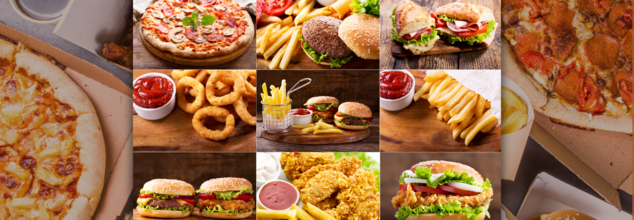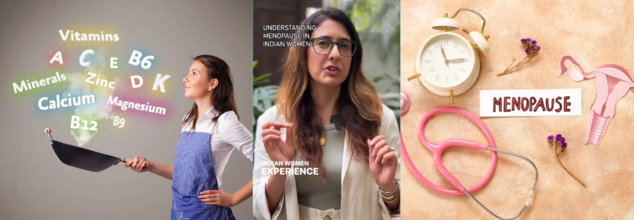- Health Conditions A-Z
- Health & Wellness
- Nutrition
- Fitness
- Health News
- Ayurveda
- Videos
- Medicine A-Z
- Parenting
- Web Stories

Credits: Canva
With Every Bite Of Ultra-Processed Foods, You Could Be Increasing Your Risk Of Premature Death, Says Study
Every aisle in the modern supermarkets reflects the convenience that comes with food these days—frozen meals, packaged foods, instant drinks—all designed to fit right into the busy lives of people today. Yet behind the ease and the flavor lies a growing volume of scientific evidence sounding an alarming warning, ultra-processed foods may be quietly speeding up the risk of early death.
The fascination and attraction of fast, easy, and very tasty foods commonly masks a dark truth. An international research published in the American Journal of Preventive Medicine indicates that heavy consumption of ultra-processed foods (UPFs) dramatically raises the risk of premature mortality. This new proof revives widespread demands for global food reforms since UPFs currently make up the majority of diets in most nations, including the United States.
What Are Ultra-Processed Foods?
Ultra-processed foods, also known as UPFs, are industrial products often made of ingredients that are not typically used in home preparation preservatives, emulsifiers, artificial sweeteners, colorants, and hydrogenated oils. Some of these foods are ready-to-eat products such as sugary beverages, pizzas, burgers, chicken nuggets, chocolates, and snack foods.
Ultra-processed foods, engineered with additives, preservatives, and artificial ingredients, now comprise over half the average American diet, based on data from the U.S. Department of Agriculture. Their ubiquity and intensive marketing have made them seem inevitable, but accumulating evidence indicates that the health toll is much more serious than realized.
Under the NOVA food classification system, UPFs are defined by their intensive industrial processing, which is typically used to produce hyper-palatable and highly profitable foods. Yet, the convenience comes with an increasingly large body of evidence showing that these foods contribute to a variety of chronic diseases, including cardiovascular disease, obesity, diabetes, depression, and various forms of cancer.
How Ultra-Processed Foods Are Linked to Early Death Risk?
The new study by Eduardo Augusto Fernandes Nilson of the Oswaldo Cruz Foundation in Brazil compared dietary and mortality data from eight nations. Their results are chilling:
In the United States alone, UPFs contribute to 124,107 avoidable early deaths each year.
England has around 17,781 premature deaths each year due to UPF consumption.
Similar trends are seen in other nations: 25,000 early deaths in Brazil, 17,000 in Mexico, and 7,700 in Canada.
It is discovered that a 10% increase in consumption of UPFs increases the probability of death by age 75 by 3%. In the U.S. and U.K., where UPFs account for over half of total dietary energy (54.5% and 53.4% respectively), the consequence is particularly sinister.
How Ultra-Processed Foods Harm Your Health?
It's not only the high contents of unhealthy fats, salts, and sugars that render UPFs harmful. The very industrial processing itself — and the multitude of artificial additives such as colorants, emulsifiers, and sweeteners — seems to have negative impacts on human health. As Nilson says, these foods impact health outside of the conventional nutrient content by changing the foods at the molecular level.
This insight changes the story: it's not so much about calories or macronutrient mix, but the chemical and structural changes foods go through when processed.
A number of studies, including a February 2024 study, have established a clear "dose-response" between UPF consumption and adverse health outcomes. Even modest increases in UPF intake — a mere serving per day — have been linked to:
- 50% greater risk of death due to cardiovascular disease
- 53% higher risk of anxiety
- 55% increased risk of obesity
- 40% increased risk of the development of type 2 diabetes
- 41% increased risk of sleep disorders
- 20% higher risk of depression and premature death from all causes
- Adding only an additional 10% more UPFs onto a previously optimal diet was also associated with increased rates of cognitive decline, stroke, and upper gastrointestinal tract cancers.
Preventable Deaths Across Continents Due to Consumption of UPF
Nilson and his group approximated preventable premature deaths resulting from UPF consumption to range by country:
- 4% in Colombia
- 5% in Brazil
- 6% in Chile
- 10.9% in Canada
- 13.7% in the United States
- 13.8% in England
The statistics highlight that UPF death rates are highest in countries where such foods are prevalent in diets. Although the leading consumers are high-income nations, middle-income countries such as Brazil, Mexico, and Chile are rapidly closing in, sparking fears of an emerging global health epidemic.
Why Are UPFs So Dangerous?
Aside from the additives and processing, UPFs interfere with proper metabolic functions. They make their way into systemic inflammation, interfere with the gut microbiota, affect satiety signals, and are highly addictive. These actions individually boost the risk of chronic disease and early death.
Heart disease, stroke, type 2 diabetes, colorectal cancer, dementia, and obesity are all part of the expanding list of conditions associated with excessive UPF consumption.
Steps to Cut Down Consumption of Ultra-Processed Foods
Although it might not be feasible for everyone to completely eliminate UPFs, making slow, sustainable changes can make a big difference in health outcomes:
Prioritize whole foods: Whole grains, fresh fruits and vegetables, lean proteins, nuts, and seeds should be the staple of your diet.
Read labels carefully: Be wary of lengthy ingredient lists with unknown additives.
Cook at home: Cooking yourself provides more control over ingredients and cooking techniques.
Make gradual transitions: Rather than an all-or-nothing method, gradually decrease dependence on ultra-processed foods.
Prioritize balance: Opt for half the plate to consist of fruits and vegetables at each meal.
Educational campaigns and supportive policies may also assist consumers in making educated decisions and transitioning away from ultra-processed diets.
As the racks in our supermarkets become heavier with brightly colored packaging, experts are calling on Americans to change their diets not tomorrow, but today. Ultra-processed foods—think packaged snack foods, ready-to-eat meals, sweet cereals, and even some so-called "health" bars have quietly insinuated themselves into our daily lives.

(Credit-Canva)
Ultimate Breakfast Recipe That Will Boost Your Fiber Intake
Many people consider breakfast the most important meal of the day, making sure they have a good spread of tasty food. However, it is very easy to overindulge, causing you to feel bloated and uncomfortable early in the morning. One of the best ways to tackle this is by eating a meal filled with fiber and other nutrients.
While many people go for meals like chocolate flakes or cereals, foods that are marketed as breakfast meals, they are not as good for your health. They are filled with processed sugars, flour and lack fiber. According to the Cleveland Clinic, a low sugar meal early in the morning is essential to avoid feeling sluggish and tired. They also recommend that adults should have 25 to 35 grams of fiber each day, so beginning with a fiber-rich breakfast is a good option. Not only will it help you slow down digestion, but it will keep you fuller for longer.
However, looking for fiber-rich meals and preparing them can be a hassle, especially for people who have early mornings, Dr. Karan Rajan has a simple answer to that. Dr. Karan Rajan, NHS Surgeon, who is known for his educational videos on social media shared his fiber filled breakfast recipe for people looking to boost their fiber intake with healthy and light foods.
What Does A Fiber-Packed Breakfast Looks Like?
Dr. Karan Rajan recently shared his recipe for the "ultimate breakfast," emphasizing its high fiber and protein content. In a step-by-step guide posted on TikTok, he detailed the specific benefits of each ingredient. This breakfast bowl offers a significant contribution towards the NHS-recommended daily intake of 30g of dietary fiber. The ingredients you will need are
- 250g of kefir yoghurt
- A handful of frozen blueberries
- A handful of frozen raspberries
- 2 tablespoons of chia seeds
- 25g of dark chocolate (at least 70% cocoa)
Kefir Yogurt
Dr. Rajan began his recipe with a base of kefir yoghurt, highlighting its impressive nutritional profile. This nutrient-dense yoghurt is recognized for its potential to improve gut health, bolster immunity, and support both heart health and weight management.
He explained that it has 30g of protein but also how it is a good source of lactic acid-producing bacteria as well as yeast which contribute to microbial diversity in your gut. For those unable to find kefir, Dr. Rajan suggested using another yoghurt with live and active cultures.
Blue Berries And Raspberries
These berries contribute "at least 6g of fiber" to the dish and are a rich source of prebiotic fibers. These specific fibers can promote the growth of beneficial gut bacteria, aiding digestion and potentially alleviating constipation.
Dr. Rajan noted "Dark colored plants like raspberries, blueberries and blackberries are a concentrated source of polyphenols, which are plant-based antioxidants." A 2020 study published in the Biomedicine & Pharmacotherapy suggests that diets rich in polyphenols may be associated with a lower risk of heart disease by improving blood flow and potentially lowering blood pressure.
Chia Seeds And Dark Chocolate
To further enhance the nutritional value, Dr. Rajan added pre-soaked chia seeds to his breakfast bowl. This simple addition provides an extra 4g of protein and a substantial 10g of fiber. For all the chocolate or cocoa lovers, he added dark chocolate to his recipe as 25g of dark chocolate (70% cocoa) has at least three to four grams of fiber.

Credits: Instagram & Canva
Nutritionist Shares Tips For A Healthy Menopause For Indian Women
Menopause marks the end of a woman's menstrual cycle, however, the transition is rarely ever straightforward. While this phase brings significant changes to all women, Indian women often face it earlier than others. In fact, as per a 2016 study published in the Indian Journal of Medical Research, titled Natural Menopause Among Women Below 50 Years in India: A Population-based Study, notes: "In India, the range of mean age at menopause reported in different studies appears to be rather young."
The mean age where menopause occurs is between 45 to 55 years of age, whereas, in India, the age range is between 41.9 and 49.42. In fact, as per the National Family Health Survey 3, which was carried out during 2006-06, about 18% of married women in the age of 30 to 49 years had reached menopause.
Based on this data, nutritionist Pooja Makhija delved into the effects of menopause on Indian women and stressed on the importance of midlife health care.
Why Do Indian Women Hit Menopause Earlier?
Makhija highlighted an interesting fact that Indian women experience menopause about five years earlier than their Caucasian counterparts. While the global average age for menopause is around 51, Indian women typically reach this milestone at approximately 46.7 years. Makhija emphasizes the need for women in India to start caring for their midlife health much earlier, given this difference in timing.
As per the 2024 study published in journal Nature, titled, Exploring the triggers of premature and early menopause in India: a comprehensive analysis based on National Family Health Survey, 2019–2021, noted that due to ovarian insufficiency, some women attain early menopause. The study also based its data on National Family Health Survey 2019-21 to reach the results.
The study also quoted a PAN India study by Ahuja (2016) that noted a strong association between early onset of menopause and various factors that contribute it, including poor socio-economic background, being underweight, parity, and age at pregnancy. Women who live in rural areas where access to healthcare and nutrition may be limited, experience menopause earlier. Women who also have more children could experience an earlier menopause.
What Happens When You Hit Menopause Earlier?
As women approach menopause, they face a higher risk of heart disease and a faster decline in bone density. This is particularly concerning for Indian women, as they already tend to have low levels of vitamin D. Makhija points out that while menopause may be a subject of silence worldwide, it is even less discussed in Indian households, which contributes to women suffering in silence.
As per a 2023 study published in journal Nutrients, titled The Importance of Nutrition in Menopause and Perimenopause—A Review, menopause is also associated with an increased prevalence of obesity, metabolic syndrome cardiovascular diseases, and osteoporosis.
The study notes for the importance of a balanced diet and fluid intake and the role of dietary prevention of cardiovascular diseases, role of sleep and the key preventive nutrients in menopause. These are: vitamin D, calcium, vitamin C, B vitamins, and protein intake.
Makhija also urges that midlife care should not be about merely surviving menopause but thriving through it. She advocates for a fresh perspective on how Indian women approach menopause, with a focus on proactive health management.
The post also highlights that Indian women are less likely to seek treatment for menopause symptoms compared to their Western counterparts. Whether it's hormone replacement therapy (HRT), lifestyle adjustments, or dietary changes, informed choices can drastically improve midlife health.
Makhija concludes with a powerful message: "It’s high time we stop shying away from menopause. Let’s take charge of this together." The need for open conversation and proactive care has never been more urgent.

Credits: Canva
Dirtiest Things That You Touch In A Restaurant That Could Cause Food Poisoning
Even restaurants with top health grades can host invisible germs that could make you sick. From menus to condiment bottles, certain spots are more prone to contamination than others. Here’s what to watch out for during your next meal out—and how to protect yourself.
Menus: A Common Culprit
Menus are one of the first things you touch at a restaurant—and also one of the most germ-laden. Research shows they often carry traces of bacteria like E. coli and Staphylococcus aureus due to frequent handling. It is also because so many people visit the restaurants and touch the same menu. The plastic on it also absorbs the moisture from people's hands.
Plastic menus, in particular, can be germ magnets. Unlike paper, plastic doesn’t absorb moisture, allowing bacteria to thrive if the surface becomes damp. To stay safe, wash your hands after handling menus and avoid touching your face or food until you do.
Touch Screens: Convenient But Risky
Self-ordering kiosks and touch screens offer convenience, but they’re also hotbeds for bacteria. A study in London found traces of Enterococcus faecalis (linked to infections) and staph on some restaurant touchscreens.
If you’re wary of germs, consider skipping the kiosk and ordering at the counter instead—especially if it’s less busy.
Ice: Looks Clean, But Is It?
It may surprise you, but ice can harbor bacteria too. Although studies found bacteria in ice from restaurants, the levels typically weren’t high enough to cause illness. Still, lab experiments show that most drinks—except whiskey—can let bacteria from ice survive.
To be cautious, avoid drinks with ice if you're particularly sensitive or have a weakened immune system.
Lemon Wedges: Pretty, But Potentially Dirty
That slice of lemon on your drink could be carrying more than just tangy flavor. In one study, nearly 70% of lemon wedges tested contained microorganisms—some with dozens of them.
Healthy stomachs usually fend off these germs, but those with chronic conditions like diabetes, kidney disease, or compromised immunity should be extra careful. Watch to see if your server uses gloves or tongs to handle garnishes.
Buffets and Salad Bars: Shared Space, Shared Germs
Buffets and salad bars invite a lot of hands and airborne particles. People may cough or sneeze near the food or reuse utensils between dishes, spreading germs unknowingly.
To minimize risks:
- Always grab a new plate for seconds.
- Avoid touching serving utensils to different foods.
- Make sure hot food is kept hot and cold food is chilled.
- Look for sneeze guards and don’t eat in line.
Cafeteria Trays: Dirtier Than You Think
Trays used to carry food can be surprisingly dirty. One study found they often have more bacteria than even gym mats or bathroom surfaces. That’s because trays aren’t always cleaned between uses. Using a napkin as a barrier or cleaning your tray with a sanitizing wipe can help.
Condiments: Handle With Caution
Ketchup bottles, salt shakers, and pepper mills pass through many hands—and may carry bacteria like E. coli or coliform. If you have hand sanitizer or a disinfectant wipe, use it before handling these items, especially if you’re about to eat finger foods.
Table Surfaces: Wiped, But Not Always Clean
Even if your server wipes the table, it doesn’t guarantee cleanliness. If the same cloth is used repeatedly without disinfection, it can actually spread bacteria. A quick hand sanitizing or using a placemat can provide some extra protection.
Stay Aware, Stay Healthy
Dining out should be enjoyable—and it can be, if you're aware of these hidden risks. A few simple precautions like hand-washing and watching how food is handled can go a long way in keeping germs at bay.
© 2024 Bennett, Coleman & Company Limited

